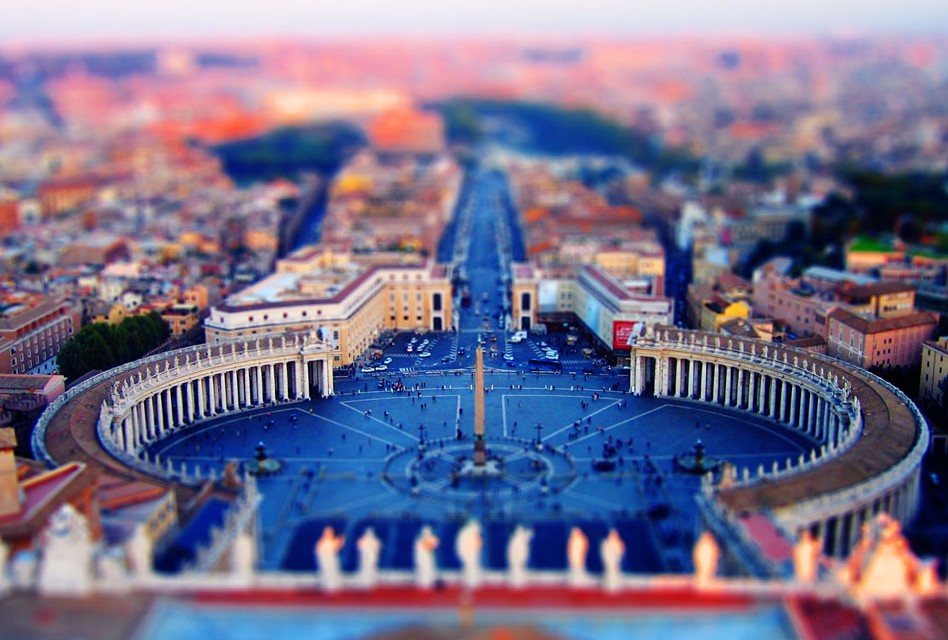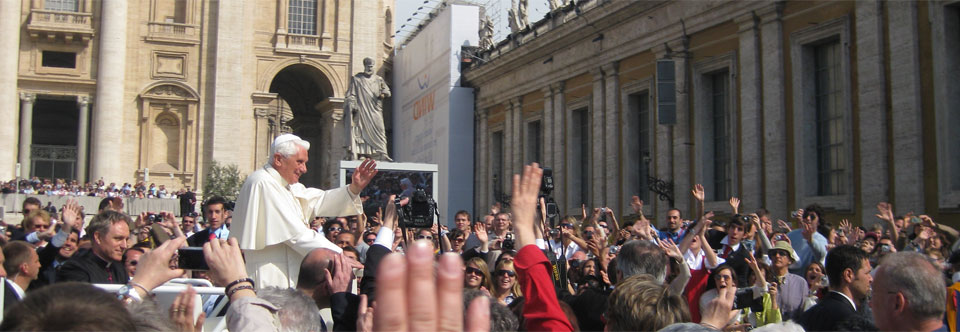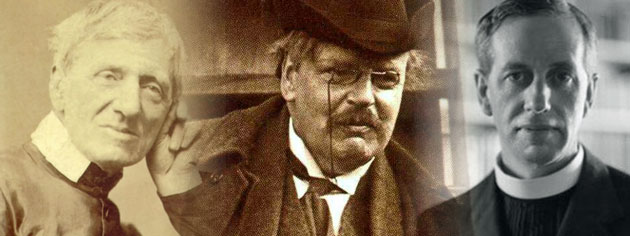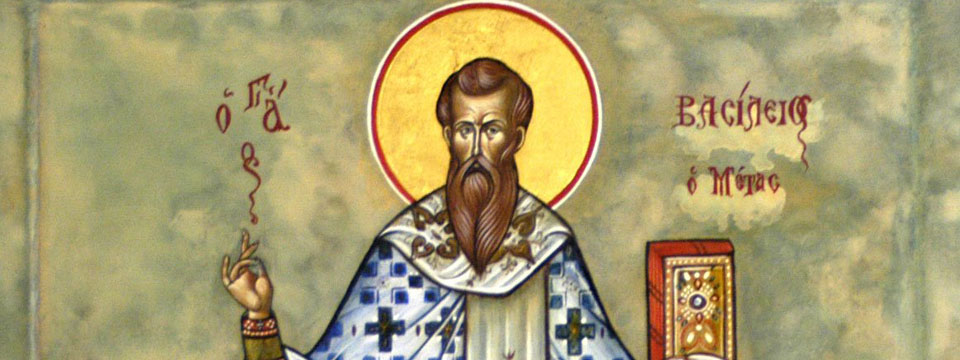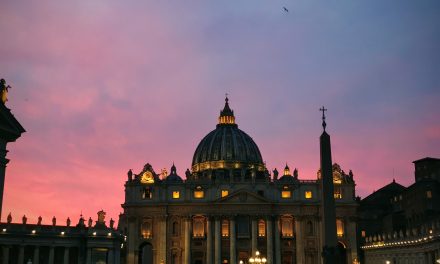The Church is the mother of our faith because she generates us, she nourishes us, she strengthens us in the faith (Lumen Gentium, n. 6-7). Saint Cyprian affirms: “One can not have God as Father who does not first have the Church as mother.”{{1}} And he adds: “we are born from her womb, we are nourished by her milk, we are animated by her spirit.”{{2}} Even Saint Augustine exhorts us to love the Church, our mother.{{3}} Mother Church is the authorised and authoritative teacher of our faith. It is to the apostles and their successors that Jesus entrusted the task of preaching the Gospel to every creature and to baptise in the name of the Most Holy Trinity. And such teaching the Church performs with authority, because she enjoys the assistance of the Holy Spirit, the Spirit of truth (cf. Jn 14:17), who guides her “to the whole truth.” (Jn 16:13) For this reason the Church becomes the guarantor of the faith. With the two wings of the wisdom of her pastors and of the holiness of her witnesses she walks in the truth, because she lives and nourishes herself on her Lord, “the way, the truth and the life.” (Jn 14:6)
Print Friendly Format
Download and view this article as it appeared in the Winter 2015 issue of The Priest.
1. The Church, Mother of the Faith
For every baptised person the Church is mother, teacher and spiritual homeland. Wherever he finds himself, in whatever nation of the world he might live in, the Christian lives, confesses and celebrated the same faith of mother Church. In the Credo, after having professed our faith in God the Father, in Jesus Christ, in the Holy Spirit, we add: “I believe in one, holy, catholic and apostolic Church.” To “believe in the Church” does not constitute a fourth article of faith, but is part of the third article of the credo — that which expresses faith in the Spirit. Saint Irenaeus give us the reason for this when he writes:Where the Church is, there is also the Spirit; and where the Spirit of God is, there also is the Church and every grace.{{4}}“I believe in the Church” means to believe that the Church exists as mystery, as the salvific sacrament of Christ in history, as the body of Christ animated by his Spirit of holiness and of truth, as the means through which salvation and divine grace reaches mankind.{{5}}
2. Love for the Church
Jesus loves his Church: “Christ loved the Church and handed himself over for her.” (Eph 5:25) Every baptised person loves the Church because he recognises her as his mother and teacher. He defends it, he grieves when she is persecuted, he does not judge her and he never condemns her. And above all he never looks at her “from the outside,” with resentment, with bitterness. The faithful person does not attack her integrity, rather he makes every effort so that her mantle of grace may extend to the farthest boundaries of the earth. “Love for the Church is therefore the identity card of the true Catholic.”{{6}} Madeleine Delbrêl used the expression “Christ-Church.” For this French woman, a great witness of the Gospel, who passed from atheism to the life of a mystic, the Church was the “Jesus of now.”{{7}} She used to say:The Church: I am in it as a member in the body, as a cell in a living organism, she communicates to me the life of the children of God.{{8}}And she added:
Two thousand years of the Church have taught us that only this Church is suitable, in the full sense of the word, to live the Gospel. Only the Church is sufficiently strong to carry the Gospel without succumbing.{{9}}Madeleine Delbrêl concluded:
Now we are the cells of the body of Christ-Church, cells at one and the same time intelligent and loving. Only one cell can infect the entire organism, but only one cell can let pass the injection needle that saves.{{10}}A profound and filial love for the Church produces an obedience that is joyful, serene, not forced and servile. If one must love his earthly mother, all the more must he love the Church, the mother who birthed us to divine life through Baptism, that makes us grow and nourishes us with her sacraments. Love for the Church produces a more intimate knowledge of this our mother. Saint Gregory the Great once said:
When we love divine truths, by loving them we know them, because love is by its very nature a knowledge. (Amor ipse notitia est.){{11}}Everything that has been said thus far is valid above all for the priest. In fact, love for the Church is concretely the priest’s generous offer of his life for this holy mother. In 1998 Vittorio Fusco — bishop of a small Italian diocese – died, devoured by sickness. He was know as a Scripture scholar. On his death bed Bishop Fusco entrusted to Archbishop Cosimo Ruppi, his friend, the following spiritual testament:
I am confiding in you, your Excellency, I do not know how things will go, but know that I offer my life for the Holy Father, for the diocese, for vocations, for the good people of my diocese, for the Church. Remember what I am saying.{{12}}The mission and apostolate of the priest must make knowledge of, and intense love for, the Church shine out.
3. Sentire cum Ecclesia
One of the gestures of the rite of priestly ordination is that of putting one’s hands in those of the bishop, as an act of total obedience to the pastor of the particular Church, who is in communion with the other bishops and with the Supreme Pontiff. Obedience to Christ and to his Gospel implies obedience to the bishop and to the pope. There resides in this communion among pastors and between the pastors and the pope, the innate vitality of the Catholic Church, which is the one Church of Christ on earth, as the dogmatic Constitution on the Church of the Second Vatican Ecumenical Council solemnly affirms:[The Church of Christ] subsists in the Catholic Church, governed by the successor of Peter and by the bishops in communion with him.{{13}}The efficacy of the priestly apostolate derives from the grace of obedience to the bishop and to the pope, Supreme Pastor of the Church, desired by Christ as the foundation of unity, of ecclesial charity and of holiness. Even in the constitutions of the religious orders and religious congregations, there is a constant reference to the Holy Father as the Supreme Superior of the Institute. It is in this context that the exhortations St John Paul II addressed to the Jesuits on April 22, 1991 are understood:
Love the Church; may your filial adhesion to her Magisterium be without shadow […] Every founder and every foundress has left as an inheritance to their followers the sentire cum Ecclesia and fidelity to the Magisterium.{{14}}It has been written about St Francis of Assisi:
With the Church believing, praying, working, feeling: Sentire cum Ecclesia is for him a fundamental principle on the same level as that of regulating oneself in all things according to the Gospel; and so without exaggeration we can say that Francis was “eccelesiality personified.”{{15}}The Poverello, totally taken by his sentire cum Ecclesia, exhorted his friars to be “simple servants and subjects at the feet of the same holy Church, stable in the Catholic faith.”{{16}} Fr Riccardo Villoslada, a noted professor of Church history at the Gregorian University, wrote of St Ignatius of Loyola:
His devotion to the Vicar of Christ and to ‘our holy mother hierarchical Church’ flowed naturally from his passionate love for ‘Our common Lord Jesus’, for ‘Christ the Redeemer our Supreme Pontiff.’{{17}}St John Bosco loved the Eucharist, the Blessed Virgin Mary, and the Pope. They were his three “white loves,” as he used to say. Witnesses affirm that Don Bosco had love I would say instinctive in the saints, for the Church and for the pope.{{18}} Pius IX and Leo XIII often compared him to St Francis of Assisi for his attachment to the Church and to the Roman Pontiff. In the conclusion of one of his publications on the spirituality of the Salesians of Don Bosco, the French historian François Desramaut writes:
The Salesian inserts himself, without hesitation, among the Christians capable of speaking with love of the Church, “judging her with affection, almost as if she were a mother.” These are aware of having received the life of the Spirit in the Church and through the Church. Perhaps they know her limits, her wrinkles and even her scandals. But they do not give it great importance. Instead they duly evaluate the advantages of her presence for the person and for humanity: the beneficial energies that she spreads, the experience of God manifested by the holiness she offers as an example, the wisdom that emanates from the Word of God, the love that unites and aroused solidarity beyond national and continental boundaries, the sense of life she proposes, the values that she defends and the prospects of eternal life that she opens. The Salesian family admires and loves the Church of Jesus Christ.”{{19}}For the Jesuit Paolo Dezza too, “feeling with the Church means not only knowing and wanting, but having a knowledge and a will informed by love, animated by this affectionate sentiment towards the Church, that make possible and easy even that which could seem impossible or too difficult.”{{20}} What moved me when I read one of his biographies, was the love and devotion which St Luigi Orione had for the pope, teaching his spiritual sons this very same thing. In one letter he wrote:
For the grace of God I will not sell a single comma of my faith for any plate of lentils. [ … ] All the gold in the world does not equal one breath of the desires of the Pope.{{21}}Don Orione would have given his blood and life for the pope:
The pope: here is our credo and the only credo of our life and of our Institute.{{22}}For this his obedience to the pope, Don Orione, following the example of the Ignatian constitutions, reserved to his religious professed for at least ten years a special vow, the so-called ‘fourth vow’ — that is, the vow of full and absolute dedication to the will of the pope. And he warned:
Let no one surpass us in sincerity of love, in devotion, in generosity to Mother Church and to the pope; let no one surpass us in working because the desires of the Church and of the pope are followed. Let no one surpass us in following pontifical directives, all, without hesitation and without whining, without coldness, without reservations. Full and filial and perfect adhesion: of mind and heart and works, not only in all that the pope decides solemnly in matters of dogma and morals, but in everything whatever it might be that he teaches, commands and demands.{{23}}For St Luigi Guanella too, obedience and love for the pope constituted the seal of his fidelity to the Church:
In the holiness of Don Guanella one note shone out particularly: unconditional assent to the Apostolic See, veneration and filial love for the Supreme Pontiff.These are the words pronounced by Cardinal Ferrari in the homily during the funeral Mass of Don Guanella. As one who loved Sacred Scripture, Don Guanella saw in papal teaching the north star for its interpretation. For him, Rome — the seat of Peter — was the more suitable environment to make his works flourish: In Rome, under the gaze of the common Father, all the works of God flourish, prosper and have the possibility of radiating to the entire world and to do great good to the advantage of souls and to create a pleasing and consoling thing for the heart of the Holy Father, who so devoutly desires the good of souls. Bl Jeanne Emilie de Villeneuve, who died in 1854 and was foundress of the Sisters of Our Lady of the Immaculate Conception of Castres in France, in an era still pervaded with Gallicanism, was not ashamed to affirm: “I am an ultramontane,” wishing to express with that her unconditional devotion to the pope. And as a loving daughter of Holy Mother Church, she chose for her congregation the great Catholic devotions: love for the Eucharist, the Sacred Heart and Mary Immaculate. Even today, in a Catholic culture often sullied with an anti-Roman complex and great disregard for papal teaching, it is necessary to promote a renewed and concrete devotion to the pope, that does not finish with applause, but accepts and assimilates his teaching. In short, it would be hoped, for example, that bishops and priests reserve every day a period of “Petrine time,” dedicated to the acceptance and assimilation of papal teaching, to prayer for the universal mission of the pope, to the demonstration of love and devotion of the entire Catholic Church for him whom Providence has placed on the Chair of Peter. St George Preca, a Maltese priest, and father of catechesis of that nation, thus greeted the pope: “Salve papa noster, salva petra fidei, salva coeli ianitor. Et Dominus sit tecum.”
4. Sentire cum Ecclesia — how difficult is it?
There is no hiding from the present shortcomings among the sons of the Church — and not only among the ordinary faithful. Our attitude in this regard is a renewed response of love: shortcomings not withstanding, the divine Bridegroom will never let his Bride want for his total and sanctifying fidelity. In the message to priests on 30 June 1968 Bl Pope Paul VI wrote:Brothers and most beloved sons, have trust in the Church, love her much … love her even in her limitations, in her defects; certainly not for her limitations and for her defects and perhaps even for her sins, but because only by loving her will we be able to heal her and make shine forth her beauty as the Bride of Christ.{{24}}Another difficulty can come from the Magisterium of the Church. We often tend to listen more to the press or to questionable theological hypotheses than to the indications of the Church’s teachings. In a particularly difficult moment in the post-conciliar life of the Church, Paul VI invited people to cultivate a taste for the Church:
We need to love the Church. The sense of the Church has been spoken about; we would like to push always further this interior phenomenon and exhort you to have a taste for the Church, which today, unfortunately, seems to exist all the less in so many, who even present themselves as reformers of the Church; they have the taste for contestation, for criticism, for emancipation, for an arbitrary view, and often for her disintegration and destruction. No, they have no taste for the Church, and perhaps not even love.{{25}}In order to understand how love does not reduce the aspiration of authenticity, Agostino Gemelli, a Franciscan and founder of the famous Roman medical clinic, used to affirm that St Francis had the same purposes of renewal as did heretics:
But what distinguishes St Francis from heretics and places him suddenly a thousand miles above sects, is his decided and total submission to the Catholic Church. All the points made by heretics in opposition to Rome, he takes up and resolves in obedience to Rome: they wanted to follow the Gospel literally, and so does St Francis, but he accepts every word of the Gospel, including those which refer to the authority of Peter, of the Apostles and of their successors. Heretics wanted preaching in the vernacular, and Saint Francis preaches in the vernacular, but with the permission of the pope. Heretics wanted poverty, chastity and work, but decorated their own virtue with pride, railing against the greed and bad conduct of the clergy, condemning those who did not live as they did, and disseminating hate; St Francis, on the other hand, considers himself the least of men, kisses the ground where a priest passes, even if he be unworthy, because he is a minister of God; he warns sinners above all with example and with penance; he does not pretend holiness from others; he does not condemn anyone, but blames and corrects himself and brings peace everywhere.{{26}}
5. In full communion with the pastors of the Church
Sentire cum Ecclesia concretely means to live in full communion with the pastors of the Church and to have a fruitful faith in service to the Church, feeling ourselves as affectionate and faithful sons of Holy Mother Church. In the Spiritual Exercises, St Ignatius of Loyola enumerates eighteen rules about sentire cum Ecclesia. He includes one, a paradoxical one, which goes like this: 13. In order not to make a mistake, we must hold that what we see as white is black, if the hierarchical Church says so. Because we believe that that spirit which governs us and supports us, is the same in Christ Our Lord, who is the Bridegroom, and in the Church, which is his Bride. In fact our holy mother Church is ruled and governed by the same Spirit and Lord who dictated the ten commandments. St Josemaría Escrivá, founder of Opus Dei, wrote in The Way: 518. What joy to be able to say with all the strength of my soul: I love my Mother, the holy Church! The saints were literally overzealous to make the Church attractive. The holiness of Christ-Church must be able to shine through our life and our preaching — above all in regard to fundamental ethical problems like abortion, euthanasia, the sacrament of matrimony, the welcoming of life, and the education of children. The more today’s culture is without or against the Church, the more we must be Church. Certainly it is the Church who is the protagonist of mission, which, however, passes through our apostolic passion. Sentire cum Ecclesia is lived in the acceptance and implementation of the doctrinal directives of the Pope and Pastors. I remember that when Benedict XVI, in June of 2005, promulgated the Compendium of the Catechism of the Catholic Church — which can be considered the catechism of two Popes, John Paul II and Benedict XVI — negative reactions precisely from some religious and priests arrived at the Congregation for the Doctrine of the Faith. In their critical ardour they did not realize that the Compendium had three new things, regarding content and methodology that are most useful for today’s catechesis: a dialogue approach, the essential nature of exposition and the catechetical relevance of image. In the height of irony, Anglican bishops and faithful sent the Compendium to the Congregation for the Doctrine of the Faith with their signatures declaring “This is also our faith.” The consequence was then the return of many of them to the Catholic Church. When the Congregation for the Doctrine of the Faith published in 2000 the declaration Dominus Iesus (6 August 2000), the reactions which were critical, even violent, came from neither Christians (who were primarily involved) nor Protestants and Orthodox (who actually recognised the clarity of the document), but from Catholic theologians and priests, with reactions that bordered on insult. They held, in fact, that with this pronouncement the end of inter-religious dialogue and ecumenical dialogue was decreed. In contradiction to the false prophets, Dominus Iesus not only did not block dialogue, but is today actually cited as the document that, reaffirming Catholic identity with clarity, shed light in the harbour of a thick fog of certain theologies and philosophies of religion which impede ecumenism. The Doctrinal Note on Certain Aspects of Evangelization, published by the Congregation for the Doctrine of the Faith on 3 December 2007, is a relatively unknown document of extraordinary importance to our daily pastoral care. It deals with a response to many questions that culture poses today to the Church: Why preach the Gospel? Doesn’t evangelisation violate another’s religious liberty? Why invite to conversion persons of other religions? Why require baptism? Taking into account these questions, the Note justified evangelisation while reaffirming fundamental human rights, including: religious liberty; reciprocal respect; the sharing of spiritual goods; and charity toward the needy. Knowledge, reading and implementation of magisterial documents constitute a guide of extraordinary importance for pulling oneself out of the labyrinth of the thousands of contemporary religious and ethical proposals. Christian life is nourished by that sound doctrinal lifeblood which is the Magisterium, whose job it is to announce the good news of Jesus, to make known his voice of goodness and wisdom in the modern world. Papal catechesis continues to propose the use of women and men saints as excellent models of education and formation of the life of faith today. For Benedict XVI the saint is “good news for all.” Saints give witness, in fact, to the Gospel sine glossa. Saints are more convincing than our discourses. Their witness is composed of attitudes, of gestures and of actions that are intrinsic to the Gospel.Conclusion
I wish to conclude with an exhortation of Father Gaston Courtois (1897-1970), author of the book Quando il Maestro parla al cuore. It is a long discourse between Jesus and the priest.The Lord says: “Entrust yourself to me confidently. Don’t even seek to know where I will lead you. Stay close to me and go forward without hesitating, with eyes closed, abandoned to me. With trust follow my vicar, the successor of Peter. You will not err if you force yourself to live and think in accord with him, since I am in him to be present and to teach that which humanity needs in modern times. There is nothing more dangerous than separating yourself, even only internally, from the hierarchy. You deprive yourself of the gratia capitis; little by little you will arrive at the darkening of the spirit, to the hardening of your heart: first self-sufficiency, then pride, and soon … catastrophe.”{{27}}Pope Francis often affirms that the Church is the home of joy because she announces the good news of the Gospel:
The joy of the Gospel fills the heart and the whole life of those who meet Jesus. Those who let themselves be saved by Him are freed from sin, from sorrow, the interior emptiness, from isolation. With Jesus Christ joy is always born and reborn.{{28}}To love the Church is to love Christ, the author of every good. It is he who says: “If you remain in me and my words remain in you, ask whatever you will and it will be given you.” (Jn 15:7) [[1]]Cyprian, Ep. 74, n. 7.[[1]] [[2]]Cyprian, De unitate Ecclesiae, c. 5.[[2]] [[3]]Augustine, Sermo 116, n.8.[[3]] [[4]]Irenaeus, Adversus haereses, III, 24, 1.[[4]] [[5]]Cf. Optatum Totius no. 9: Priestly formation implies educating according to the mind of the Church.[[5]] [[6]]Editorial, Il carattere ecclesiale della fede cristiana, in La Civiltà Cattolica 150 (1999) III, p. 12.[[6]] [[7]]J. Loew, Dall’ateismo alla mistica, EDB, Bologna 1998, p. 98.[[7]] [[8]]Loew, Dall’ateismo alla mistica, p. 97.[[8]] [[9]]Loew, Dall’ateismo alla mistica, p. 97.[[9]] [[10]]Loew, Dall’ateismo alla mistica, p. 97.[[10]] [[11]]Gregory the Great, Omelie sui Vangeli, II, 27, 4.[[11]] [[12]] L’Osservatore Romano, 16 July 1999, p. 7.[[12]] [[13]]Lumen Gentium, n. 8.[[13]] [[14]]John Paul II, Allocuzione alla Compagnia di Gesù durante la celebrazione per l’anno ignaziano, in L’Osservatore Romano, 24 April 1991, pp. 1, 5.[[14]] [[15]]F. D’Ostilio, Amare la Chiesa, LEV, Città del Vaticano 2000, p. 41.[[15]] [[16]]Regola Bollata 1221, cap. 12: Fonti Francescane, Assisi 1978, pp. 108-109.[[16]] [[17]]R. Villoslada, Ignazio di Loyola, in Bibliotheca Sanctorum, VII, coll. 688-689.[[17]] [[18]]S. Farina – F. Di Loreto, Don Bosco, il santo che educò con l’amore, Shalom, Camerata Picena (An) 2012, pp. 356-357.[[18]] [[19]]D. Desramaut, Spiritualità salesiana, LAS, Roma 2001, p. 151.[[19]] [[20]]P. Dezza, Amare la Chiesa per sentire con la Chiesa, in Vita Consacrata 16 (1980), p. 467.[[20]] [[21]]D. Sparpaglione, Don Luigi Orione, Cinisello Balsamo, San Paolo 2004, p. 256.[[21]] [[22]]D. Sparpaglione, Don Luigi Orione, Cinisello Balsamo, San Paolo 2004, p. 190.[[22]] [[23]]D. Sparpaglione, Don Luigi Orione, Cinisello Balsamo, San Paolo 2004, p. 91.[[23]] [[24]]Insegnamenti di Paolo VI, VI (1968), p. 316.[[24]] [[25]]Insegnamenti di Paolo VI, XIV (1970), p. 499.[[25]] [[26]]A. Gemelli, Il francescanesimo, Vita et Pensiero, Milano 1947, pp. 11-12.[[26]] [[27]]G. Courtois, Quando il Maestro parla al cuore, Cinisello Balsamo, San Paolo 1996, p. 97.[[27]] [[28]]Francis, Evangelii gaudium (24 November 2013), n. 1.[[28]]

